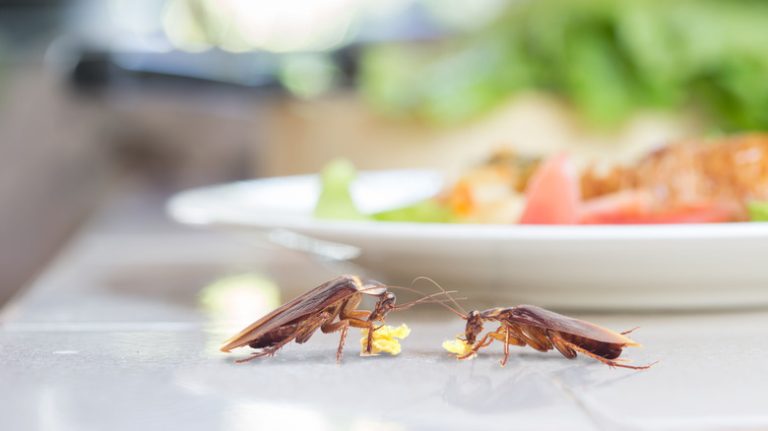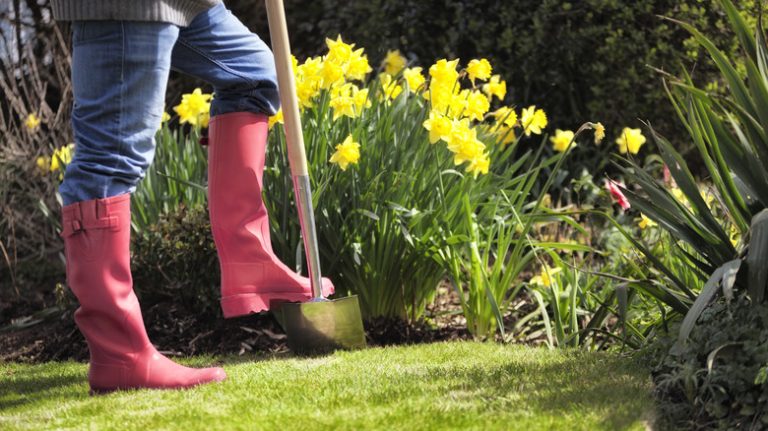If you’re a garden enthusiast, growing poppies is a great way to add a splash of color and beauty to your outdoor space. Poppies are versatile plants that can thrive in both gardens and containers. With a little care and attention, you can enjoy their vibrant blooms throughout the growing season. However, there are a few mistakes that many gardeners make when it comes to growing poppies.
One of the most common mistakes that people make is not choosing the right location for their poppies. Poppies prefer a sunny spot with average, well-drained soil. They don’t do well in heavy clay soils or wet areas, so it’s important to choose a location that meets their specific requirements. Another mistake is planting poppy seeds too deeply. Poppies have a small taproot, so it’s best to sow the seeds lightly and not bury them too deeply in the soil.
Another mistake that many gardeners make is not adding enough fertilizer to their poppies. Poppies are heavy feeders and benefit from regular feeding throughout the growing season. Be sure to use a balanced fertilizer and follow the instructions on the package. Deadheading is another important part of poppy care that many people forget. Removing the spent flowers not only keeps the plant looking tidy, but it also encourages the plant to produce more blooms.
When it comes to watering poppies, it’s important to strike a balance. While they need regular watering to flourish, they also don’t like to be watered too much. Overwatering can lead to fungal diseases and waterlogged soils, which can kill the plants. To avoid this, water your poppies when the top inch of soil feels dry, and be careful not to wet the foliage too much.
If you’re transplanting poppies, it’s important to be gentle with their delicate roots. Transplant them in early spring or fall when the weather is cool, and be sure to water them well after transplanting. Poppies are also susceptible to wilt diseases, so be careful not to plant them in the same location where other wilting plants have been grown.
In general, growing poppies is an easy and rewarding experience. They are fairly low-maintenance plants that can attract butterflies and add a pop of color to your garden. Whether you choose to grow them from seeds or start with potted plants, following these tips will help ensure that your poppies thrive and show off their beautiful blooms all season long.
Information source: Thompson & Morgan.
Planting, Growing, and Caring for Poppies
If you are wondering how to grow poppies in your garden, this guide will provide you with valuable tips and information. Poppies are beautiful flowering plants that can add a touch of color and elegance to any garden. With the right planting and care, you can enjoy these vibrant blossoms in your garden year after year.
Choosing the right location for your poppies is essential. Poppies prefer a sunny location with well-drained soil. They can tolerate a wide range of soil types, but they grow best in average to moist soils. Before planting, prepare the ground by removing any weeds and adding compost to improve the soil quality.
There are different types of poppies you can grow, including annuals and perennials. Annual poppies are easier to grow from seeds, whereas perennial poppies can be grown from seeds or bare-root plants. It’s important to note that some poppy seeds require a period of cold stratification before planting. This can be done by storing the seeds in the refrigerator for a few weeks before sowing them.
When it comes to planting the poppy seeds, scatter them on the surface of the soil and lightly press them into the ground. Water the seeds well, and keep the soil moist until they germinate. Thinning the seedlings to a spacing of about 6-8 inches apart will help the poppies grow and flourish.
Poppies are known for self-seeding, so if you let them go to seed, they will return year after year. Deadheading the flowers once they have finished blooming can help prevent self-seeding if you prefer to have more control over where the poppies grow in your garden.
Watering your poppies is crucial during the growing season. They prefer to be watered in the morning hours to allow the foliage to dry before evening. Otherwise, the plants can become susceptible to diseases. Potted poppy plants should be watered regularly but avoid overwatering, as they prefer well-drained soil.
Caring for poppies also includes weeding and keeping the area around the plants clear. Weeds can compete with poppies for nutrients and water, so regular weeding is essential to help your poppies thrive.
It’s worth mentioning that poppies have a rich history, and they have been used for various purposes throughout the ages. From being a symbol of remembrance to their medicinal properties, poppies have always captivated people’s attention. Visit this source to learn more about the diverse uses of poppies.
In conclusion, growing poppies in your garden can be a rewarding experience. With the right location, proper planting, and regular care, your poppy plants will flourish and bring beauty to your outdoor space. Whether you choose annuals or perennials, poppies are an easy-to-grow flower that everyone can enjoy.
Planting Poppies
When it comes to planting poppies, there are a few things to keep in mind. Whether you opt for the outdoor variety or prefer to grow them in containers, poppies are relatively easy to care for and can bring a statement to your garden.
First and foremost, choose a location with well-drained soil. Poppies prefer soil that is not too rich or too poor, so avoid areas with compacted or clay soil. It’s also important to select a spot that receives plenty of sunlight, as poppies thrive in full sun.
If you’re starting with seedlings, be careful not to disturb the taproot when transplanting. It’s best to sow poppy seeds directly into the ground as they do not transplant well. Sow the seeds in early spring or fall for best results.
Bury the seeds about 1/2 inch deep in the soil and keep the surface moist through regular watering. Poppy seeds need moisture to germinate, but be careful not to overwater as this can cause them to rot. Watering in the morning is usually ideal, although in hot climates you may need to water in the evening as well.
Once the seeds have sprouted, thin the seedlings to about 6-12 inches apart to allow enough space for each plant to grow. This will also prevent overcrowding and competition for nutrients.
Poppies don’t require a lot of attention once they are established. In fact, they prefer neglected areas of the garden and can often self-seed and return year after year. However, be sure to remove any weeds or competing plants that may try to take over their space.
When the poppies start to flower, you’ll be rewarded with their beautiful blossoms. Depending on the variety, poppies can bloom in a range of colors from vibrant reds to soft pinks and even calming blues. Some popular varieties include the California poppy, Iceland poppy, and Oriental poppy.
If you’re a fan of collecting seeds, be cautious as opium poppies are illegal to grow in many places. Instead, opt for other varieties that are safe and legal to grow. After flowering, you can collect the seed pods to sow in future seasons or to share with other gardeners.
In general, poppies are low-maintenance plants, but it’s always a good idea to be careful and keep an eye out for any signs of pests or disease. If you notice any issues, try to identify the problem early on so you can take appropriate action.
With their delicate foliage and stunning blooms, poppies can add a touch of beauty and history to any garden. Whether you choose to plant them in groups or scatter them in unused areas, these flowers are sure to flourish and bring joy to both you and any passerby.
Poppies from Seed
Growing poppies from seed is a great way to add a splash of color to your garden. Poppies can be grown from bare-root plants, but sowing them from seed gives you a wide variety of choices that you won’t find with other methods.
There are many different types of poppies to choose from, with each variety offering its own unique flower shape and color. From the classic red poppy to the delicate pink or white blossoms, there is a poppy variety for everyone.
When sowing poppy seeds, you can start indoors in pots or sow them directly in the ground. If you choose to start them indoors, be sure to place the seeds at a depth of about 1/8 inch and keep the soil slightly moist. Poppies prefer to be sown in early spring, around March, or in early fall for those in warmer climates.
Unlike other plants, poppies have a special taproot that makes them very sensitive to transplanting. It is best to sow them directly where you want them to grow, as they do not like to be moved. If you do need to transplant them, it is important to do so when they are still very small and the taproot is not fully developed.
Caring for poppies is relatively easy. They prefer well-drained soil and should be watered regularly, but not excessively. Make sure to water the plants at the base to avoid wetting the leaves, as this can lead to disease and rot.
While poppies do not require much fertilization, adding a little balanced fertilizer can help promote healthy growth. It is important to not over-fertilize, as this can cause the plants to grow too tall and become too top-heavy, leading to flopping over.
Deadheading is another important task when growing poppies. Removing the spent flowers before they form seed pods not only keeps the plants looking neat and tidy but also encourages more blooms to show off.
Poppies can be grown in pots or outdoor gardens, but they prefer a sunny location with well-drained soil. If you are growing poppies in pots, make sure to use a good quality potting mix and keep the plants well-watered.
The seeds of poppies are tiny and can be sown by dotting them over the prepared ground. They need light to germinate, so do not cover them with soil, but press them gently into the ground. Start sowing the seeds after the last frost and continue throughout the spring for a longer blooming period.
It’s worth noting that some poppy varieties may self-sow, meaning that they will drop their seeds and grow on their own in subsequent years. This can be a delightful surprise, as you may see poppies popping up in unexpected locations in your garden.
When it comes to caring for poppies, weeding is important to keep the competition at bay, but be careful not to disturb the delicate roots of the poppy plants. Avoid using herbicides or other chemicals near poppies, as they can be sensitive to these substances.
In general, poppies are hardy plants that can tolerate a wide range of soil conditions. However, they prefer average to slightly sandy soil, and heavy clay soil should be avoided. If your soil is heavy, consider adding some organic matter such as compost to improve drainage.
With a little time, care, and attention, you can enjoy the beauty of poppies in your garden for many years to come. Whether you choose to grow them from seed or opt for bare-root plants, poppies are a wonderful addition to any garden.

